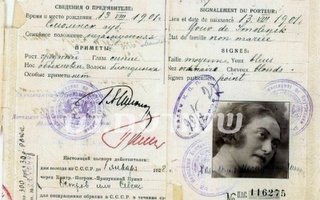
(Reb Lazer Berland of Shuvu Bonim - Photo from Here)
This may not be Part IV of my life's story, but it does voice some of my sentiments on part of what one who "switches" communities must endure. I don't say that I necessarily went through all the hardships that I mention here, but then again, I don't say that I didn't, especially some of them.....
They say Ah Gevorener Iz Erger Vi Ah Geborener - one who becomes is worse than one who is born - and there's much truth to that old Yiddish saying. Today it's used mostly to belittle those who join groups like Lubavitch and Breslov, and maybe some Baalei Tshuvah too, and it's used mostly by those "cool" to serious Judaism. For instance, a Heimishe guy who just goes through the motions and does what he needs to only so he can avoid drawing attention to himself - he would have a real problem with a guy who makes a serious change in life. A guy like this shows him that some people ARE serious about Yiddishkeit, and they DON'T just do it for their kids' sake or to avoid embarrassment. Then there are those that are currently part of their respective movements as well; many of them resent the fact that newcomers come and spoil their pristine environments, and they're pretty forward with those feelings. Some don't like any outsiders, and some like only certain ones; Kol Chad LeFum Shiuroh DiLey.
So, in some instances the Gevorener has lost both worlds; The world he left shuns him for turning his back on them, and the world he joins has yet to accept him for whatever reason. Yet, he perseveres, believing in the movement's/group's teachings and leaders, and less in the group's subculture. He tries to maintain some kind of relationship with his old friends and acquaintances, and ignores their hurtful remarks and jabs, knowing that they speak from ignorance and are basically harmless. He tries to fit in to the new surroundings by discarding any and all remnants of his former upbringing - for better or for worse - and adopting all of the current group's customs and habits. That may work, and it may not, depending on the age of our subject. Say, for example, that an Israeli becomes a Breslover, (or a Litvisher/American becomes a Skverrer) and he wants to sound like a Yerushalmi, Ashkenazi Breslover, (or a Skverrer) here too timing is everything. Just as it is when one moves to a new country and needs to learn a new language, so too when you need to change your Havoroh; it all depends if you Khapped Areyn and did it at the right time, otherwise you sound all mixed up.
Later in life the Gevorener - who thinks that he/she has already paid their "debt" to their new society - realizes that "not so fast." If he/she thought that he/she was a full-fledged members with full credentials he's about to have a rude awakening. It's Shidduch time, and everybody wants to know exactly where you spent your time, and who your parents/grandparents/siblings are. If your general Yichus is OK, and you're an all-around good guy then they want to make sure you spent your years in the same schools that they did/would've sent their children to. I'm not quite sure why that is, and what that's supposed to prove; after all, at a young age the choice of schools is up to your parents, not to you, but so goes it. So, what happens is that MAYBE you're "forced" to settle for someone of your own background, not that it's (necessarily) a bad thing, marrying somebody with a similar background, it's just that nobody likes to be told that they're second class. If you thought it ended there, Zog Ikh Dir Nein! It may go on for generations, if you're unlucky enough. Now, some of you Geborener may defend how you go about your business of "protecting" what's dear to you, and preserving the heritage your grandparents fought so hard to guard, and I'm not saying that it's a bad thing. I'm just trying to make you aware of what some people need to go through, and what many of you may take for granted.
































